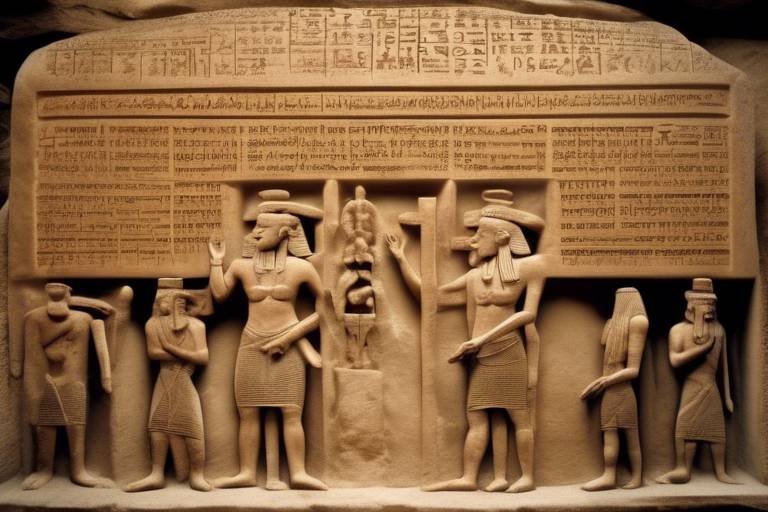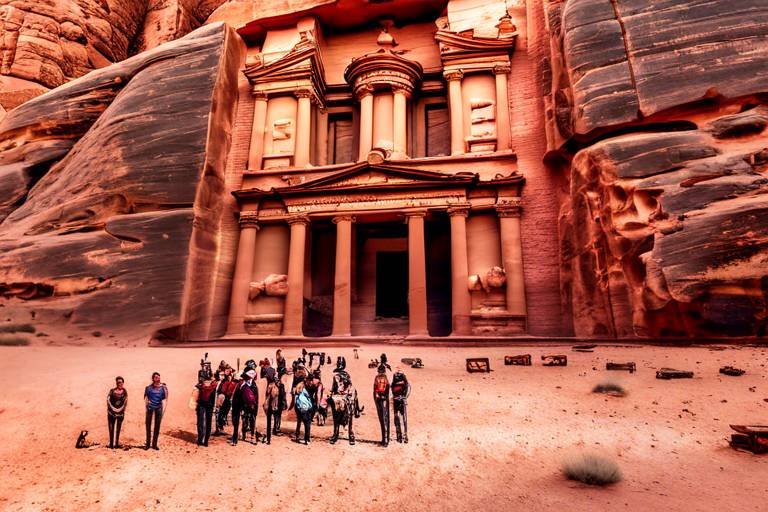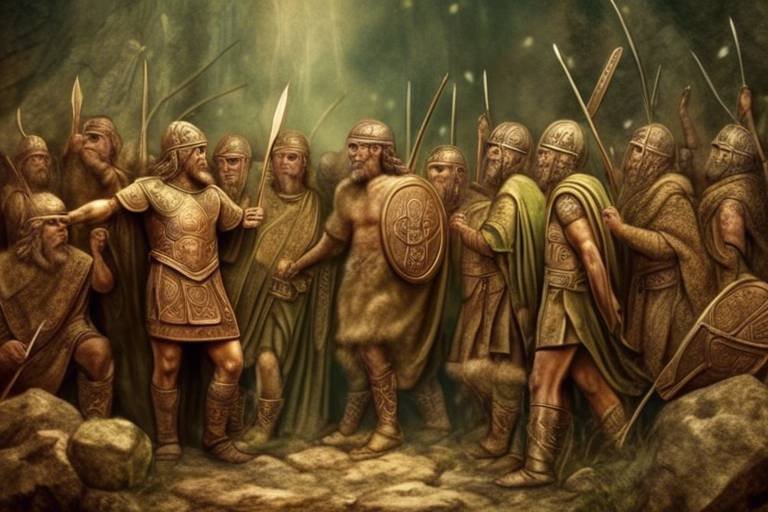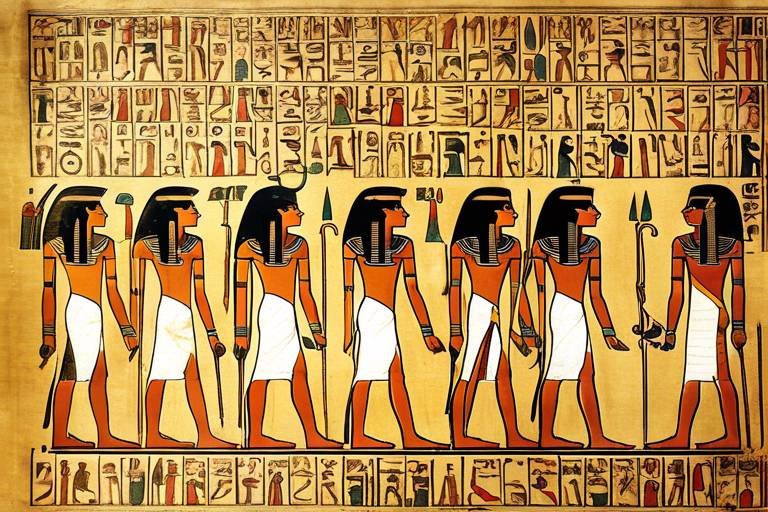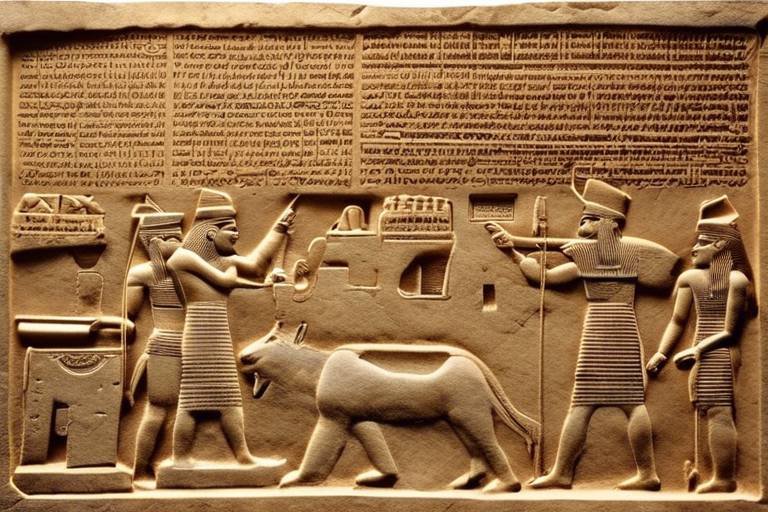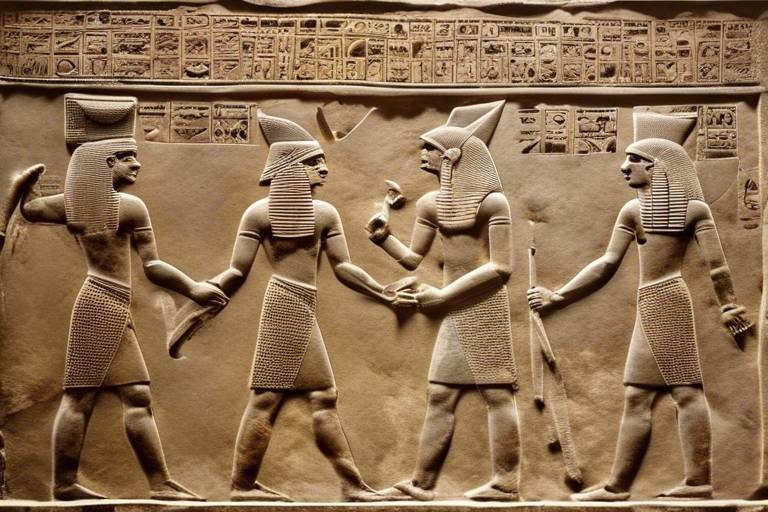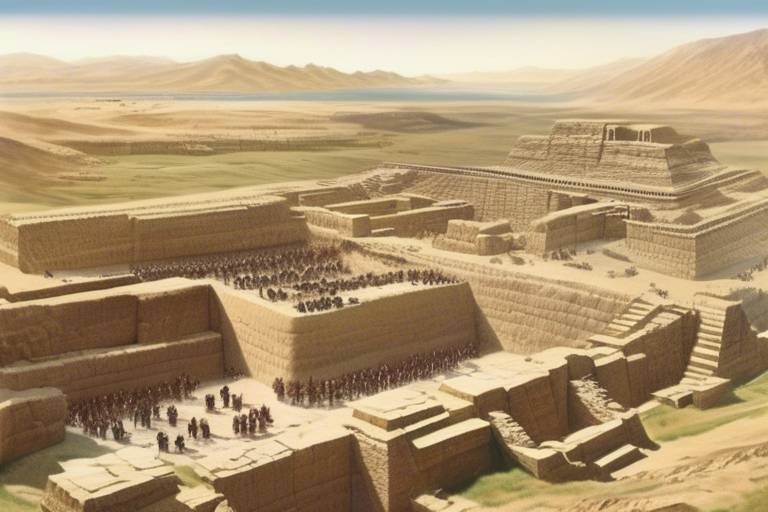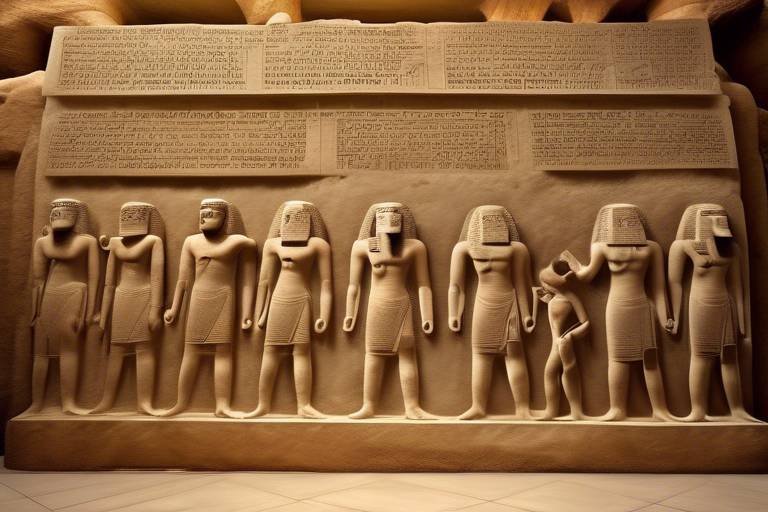The Mystery of the Ancients' Knowledge of Astronomy
Have you ever looked up at the night sky and wondered how ancient civilizations perceived the stars and planets? The mystery of the ancients' knowledge of astronomy is a fascinating journey into the past, where cultures around the world observed and interpreted celestial phenomena with remarkable precision and insight.
Ancient Astronomical Observations were not merely casual glances at the sky; they involved intricate methods and meticulous record-keeping to track the movements of celestial bodies. From the alignment of Stonehenge with the solstices to the precise calendars of the Mayans, ancient civilizations displayed a deep understanding of the cosmos.
Alignment with Celestial Events reveals how ancient cultures built their structures in harmony with the heavens. The pyramids of Egypt, the temples of Angkor Wat, and the Incan city of Machu Picchu all reflect a profound connection to astronomical events such as equinoxes and solstices.
Astrological Significance delves into the belief systems that linked celestial events to earthly occurrences and human behavior. The zodiac signs, planetary alignments, and astrological predictions were integral parts of ancient societies, shaping their decisions and interpretations of the world.
Archaeoastronomy Discoveries unearthed by modern researchers shed light on the advanced astronomical knowledge possessed by ancient civilizations. From the Antikythera mechanism to the Nazca lines, these findings challenge our perceptions of ancient technological capabilities.
Cultural Interpretations of Celestial Bodies showcase the diverse ways in which different cultures viewed and integrated celestial bodies into their religious and societal beliefs. The sun, moon, and stars held symbolic significance across civilizations, influencing rituals, myths, and social structures.
Navigation and Timekeeping were crucial applications of astronomy for ancient civilizations. Whether guiding ships across the seas or determining the optimal time for planting crops, astronomy played a vital role in practical matters and ceremonial rituals.
Legacy of Ancient Astronomical Knowledge examines how the wisdom of the ancients continues to influence modern science, technology, and cultural practices. The foundations laid by ancient astronomers have paved the way for our understanding of the universe and our place within it.
Challenges in Understanding Ancient Astronomy arise from the fragmented nature of historical records and the complexities of deciphering ancient texts and artifacts. Reconstructing the astronomical knowledge of past civilizations requires a multidisciplinary approach and a willingness to explore new perspectives.

Ancient Astronomical Observations
Ancient civilizations have long been admired for their remarkable ability to observe and track celestial bodies with astonishing accuracy. Through methods that may seem primitive by today's standards, these ancient astronomers meticulously recorded the movements of stars, planets, and other celestial objects. Their observations were not merely casual glances at the night sky but rather systematic and detailed studies that laid the foundation for our understanding of the universe.
Imagine the awe and wonder that must have filled the hearts of these ancient sky watchers as they gazed up at the vast expanse above them, connecting the dots of light to form intricate patterns that guided their understanding of time, seasons, and navigation. Their observations were not just scientific endeavors but also spiritual journeys, as they sought to unravel the mysteries of the cosmos and their place within it.
Utilizing rudimentary tools such as sundials, astrolabes, and stone circles, these early astronomers were able to predict celestial events with surprising precision. Their keen observations allowed them to track the movements of the sun, moon, and stars, enabling them to create calendars, mark important dates, and even predict eclipses. The alignment of ancient structures like Stonehenge with astronomical phenomena is a testament to the advanced knowledge and skills possessed by these ancient astronomers.
Despite the limitations of their tools and technology, the ancient astronomers' dedication to studying the heavens paved the way for future generations to build upon their knowledge and expand our understanding of the cosmos. Their observations, though made thousands of years ago, continue to inspire and amaze us today, reminding us of the enduring legacy of humanity's quest to unravel the secrets of the universe.

Alignment with Celestial Events
Ancient civilizations have long been a source of fascination and intrigue, with their profound understanding of the cosmos often shrouded in mystery. In this article, we delve into the enigmatic world of ancient astronomy, exploring the methods and accuracy of their astronomical observations, alignment with celestial events, astrological significance, archaeological discoveries, cultural interpretations of celestial bodies, navigation and timekeeping techniques, and the enduring legacy of their astronomical knowledge on modern society.
Ancient cultures possessed a deep connection with the heavens, aligning their monumental structures with key astronomical events such as solstices and equinoxes. The precision with which these alignments were achieved is a testament to the advanced astronomical knowledge of civilizations like the Egyptians, Mayans, and Greeks. By harmonizing their architecture with celestial phenomena, these ancient societies not only paid homage to the cosmos but also imbued their structures with spiritual significance and cosmic energy.

Astrological Significance
Astrological significance played a crucial role in the belief systems of ancient civilizations. They believed that celestial bodies and their movements influenced human behavior, natural events, and the fate of individuals. The alignment of planets and stars was thought to hold the key to predicting future events and understanding the interconnectedness of the universe. Ancient astrologers meticulously observed the night sky, seeking patterns and correlations between celestial phenomena and earthly occurrences.

Archaeoastronomy Discoveries
Archaeoastronomy discoveries offer intriguing insights into the advanced astronomical knowledge possessed by ancient civilizations. Through the analysis of ancient structures, such as Stonehenge in England and the Pyramids of Giza in Egypt, researchers have uncovered evidence of precise astronomical alignments. These alignments suggest that these ancient cultures had a deep understanding of celestial movements and cycles.
Furthermore, the discovery of ancient astronomical instruments, such as the Antikythera Mechanism, showcases the sophistication of ancient astronomical technology. This intricate device, dating back to ancient Greece, was capable of predicting celestial events with remarkable accuracy, indicating a level of astronomical expertise that is truly remarkable considering the time period.
Moreover, the study of ancient petroglyphs and rock art around the world has revealed depictions of celestial bodies and astronomical events. These ancient artworks not only serve as cultural expressions but also as astronomical records, providing valuable insights into how ancient societies perceived and interacted with the cosmos.
One fascinating discovery in archaeoastronomy is the Nazca Lines in Peru. These enormous geoglyphs, etched into the desert landscape, are believed to have served as a giant astronomical calendar, marking the movements of the sun, moon, and stars. The precision and scale of the Nazca Lines suggest a profound knowledge of astronomy and a deep connection to the celestial realm.

Cultural Interpretations of Celestial Bodies
Ancient civilizations have always held a fascination for their profound understanding of the cosmos. The ancient astronomical observations made by these cultures continue to astound modern astronomers with their accuracy and sophistication.
From the alignment of pyramids with specific stars to the accurate tracking of planetary movements, ancient civilizations demonstrated a remarkable grasp of celestial bodies. Their observations, often made without the aid of modern technology, showcase a deep connection to the heavens.
Ancient cultures meticulously aligned their temples and monuments with astronomical events such as solstices and equinoxes. These alignments served both practical and symbolic purposes, highlighting the importance of celestial events in their belief systems.
Many ancient societies believed in the astrological significance of celestial phenomena, attributing them to influencing earthly events and human behavior. The intricate connections they drew between the movements of planets and the destinies of individuals are both fascinating and mysterious.
Archaeoastronomical findings around the world provide evidence of advanced astronomical knowledge in ancient times. These discoveries shed light on the precise calculations and observations made by ancient civilizations, challenging our understanding of their technological capabilities.
Across different cultures, celestial bodies held varying interpretations that were deeply ingrained in their religious and societal beliefs. For example, the Egyptians associated the sun with their god Ra, while the Mayans saw the movements of Venus as a predictor of war and prosperity.
Furthermore, the Chinese believed that the positions of the stars influenced the fate of individuals, leading to the development of astrology as a means of divination. These cultural interpretations of celestial bodies not only shaped religious practices but also influenced daily life and decision-making.
Aside from spiritual significance, ancient civilizations utilized astronomy for practical purposes such as navigation at sea and precise timekeeping for agricultural or ceremonial events. By studying the movements of celestial bodies, they were able to navigate vast oceans and predict the changing seasons with remarkable accuracy.
The legacy of ancient astronomical knowledge continues to impact modern science, technology, and cultural practices. Concepts and observations made by ancient civilizations have laid the foundation for our understanding of the universe, inspiring advancements in fields such as astronomy, mathematics, and architecture.
Despite the wealth of archaeological evidence, interpreting and reconstructing the astronomical knowledge of ancient civilizations poses significant challenges. Limited historical records and cultural biases present obstacles in fully grasping the extent of their understanding of the cosmos, leaving many mysteries yet to be unraveled.

Navigation and Timekeeping
Ancient civilizations possessed remarkable skills in utilizing astronomy for navigation and timekeeping purposes. Imagine sailing across vast oceans without the aid of modern technology, relying solely on the positions of stars and planets to guide your way. The ancient mariners did just that, using the night sky as their celestial map. By observing the movements of celestial bodies, they could determine their position and direction, allowing them to navigate the seas with astonishing accuracy.
Furthermore, ancient societies used astronomical observations to develop sophisticated calendars for tracking time, particularly for agricultural and ceremonial events. Picture a civilization aligning their planting seasons with the changing positions of the stars or organizing religious ceremonies based on celestial events. The intricate connection between the movements of celestial bodies and the passage of time was deeply ingrained in their daily lives.
One fascinating example of ancient navigation and timekeeping is the Antikythera Mechanism, an intricate device discovered in a shipwreck off the coast of Greece. This ancient analog computer, believed to be over 2,000 years old, displayed the positions of celestial bodies and predicted astronomical events with remarkable precision. The complexity and accuracy of this mechanism demonstrate the advanced astronomical knowledge possessed by ancient civilizations.
Moreover, the use of celestial bodies for navigation and timekeeping extended beyond practical purposes. For ancient cultures, the stars and planets held symbolic significance, often intertwined with their religious beliefs and societal structures. The alignment of temples and monuments with specific celestial events, such as solstices and equinoxes, reflected the spiritual connection they perceived between the earthly realm and the heavens above.
Through the lens of navigation and timekeeping, we uncover a profound appreciation for the intricate relationship between ancient civilizations and the cosmos. Their ability to harness the power of astronomy for practical, spiritual, and cultural purposes speaks to the enduring legacy of their astronomical knowledge, which continues to inspire and intrigue us to this day.

Legacy of Ancient Astronomical Knowledge
The legacy of ancient astronomical knowledge is deeply ingrained in modern science, technology, and cultural practices. The profound understanding and observations made by ancient civilizations have left an indelible mark on humanity's pursuit of knowledge about the cosmos.
Ancient astronomers paved the way for future generations by developing sophisticated methods to track celestial movements and predict astronomical events. Their precise calculations and intricate observations laid the foundation for the science of astronomy as we know it today.
Moreover, the architectural marvels constructed by ancient societies, such as the pyramids of Egypt or Stonehenge in England, serve as enduring testaments to their advanced understanding of astronomy. These structures were not merely monuments but also functional observatories that aligned with specific celestial events, showcasing the profound connection between ancient cultures and the cosmos.
The legacy of ancient astronomical knowledge extends beyond scientific realms into cultural and spiritual domains. Many ancient societies believed that celestial bodies held significant astrological meanings and influences on human behavior and earthly events. This belief system has persisted through the ages, influencing various cultural practices and traditions.
Furthermore, the navigational techniques developed by ancient civilizations using the stars have had a lasting impact on maritime exploration and trade. Sailors relied on the positions of celestial bodies to navigate vast oceans, demonstrating the practical applications of astronomical knowledge in everyday life.
In the modern era, the legacy of ancient astronomical knowledge continues to inspire scientists, astronomers, and historians to unravel the mysteries of the universe. By studying the achievements of our ancient predecessors, we gain a deeper appreciation for the interconnectedness of humanity's quest for understanding the cosmos.
Overall, the legacy of ancient astronomical knowledge serves as a beacon of human ingenuity and curiosity, reminding us of the enduring fascination with the celestial realm that transcends time and space.

Challenges in Understanding Ancient Astronomy
Delving into the realm of ancient astronomy poses significant challenges for modern researchers. The primary obstacle lies in the scarcity of detailed historical records that directly explain the astronomical practices of ancient civilizations. Unlike contemporary societies with well-documented scientific methods, ancient cultures often relied on oral traditions and symbolic representations to convey their astronomical knowledge. This reliance on indirect forms of communication makes it arduous for scholars to decipher the exact methodologies and interpretations used by our predecessors.
Moreover, the passage of time has eroded many physical structures and artifacts that could offer concrete evidence of ancient astronomical practices. The remnants of ancient observatories and celestial calendars are often incomplete or ambiguous, leaving room for interpretation and speculation. Without a comprehensive understanding of the cultural contexts in which these structures were built, researchers face the daunting task of piecing together fragmented clues to reconstruct the astronomical beliefs and practices of bygone civilizations.
Another significant challenge in unraveling ancient astronomy lies in the complexity of merging archaeological findings with modern scientific knowledge. Interpreting ancient texts, inscriptions, and artifacts requires a multidisciplinary approach that combines expertise in archaeology, astronomy, anthropology, and linguistics. The intricate web of interconnected disciplines necessitates a meticulous and collaborative effort to extract meaningful insights from ancient sources.
Furthermore, the inherent biases and preconceptions of contemporary researchers can influence the interpretation of ancient astronomical data. It is essential to approach the study of ancient astronomy with an open mind and a willingness to challenge conventional assumptions. By acknowledging the limitations of our own perspective, we can strive to uncover the true depth and sophistication of ancient astronomical knowledge.
In essence, the challenges in understanding ancient astronomy serve as a humbling reminder of the vast expanse of human history and the enduring mysteries that still shroud our ancestors' achievements in the field of astronomy.
Frequently Asked Questions
- What is archaeoastronomy?
Archaeoastronomy is the study of how ancient civilizations understood and utilized astronomy in their cultures. It involves examining archaeological evidence to uncover the astronomical knowledge and practices of past societies.
- How did ancient civilizations observe celestial bodies?
Ancient civilizations observed celestial bodies such as the sun, moon, and stars using naked-eye observations, simple instruments like sundials, and sophisticated structures like Stonehenge. Their keen observations and tracking of celestial events played a crucial role in their societies.
- Why did ancient cultures align their structures with celestial events?
Ancient cultures aligned their structures, such as temples and pyramids, with celestial events like solstices and equinoxes for various reasons, including religious significance, agricultural planning, and marking important dates in their calendars. These alignments showcased their advanced astronomical knowledge and cultural beliefs.
- How did ancient civilizations use astronomy for navigation?
Ancient civilizations used astronomy for navigation by studying the positions of stars and other celestial bodies to determine direction and time. This knowledge was crucial for seafaring cultures to navigate vast oceans and for land-based societies to travel efficiently.
- What is the legacy of ancient astronomical knowledge?
The legacy of ancient astronomical knowledge is profound, as it laid the foundation for modern astronomy, navigation, and timekeeping. Many scientific principles and cultural practices today are influenced by the astronomical observations and beliefs of ancient civilizations.


